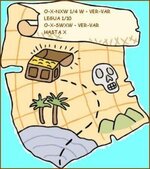Golden Clue
Newbie
Silvestri said:Oh...as far as Jose Gaspar...I really think that is indeed a crap load...but do i think pirates lived and worked in that area ....absolutely!
State Library's Work Projects Administration has a story on Gasper published in 1940
http://www.floridamemory.com/items/show/181522
This has a good account of Gasper and quite a lot of it sounds to be true. It'll be too much fiction to create.


 IF not then your like the rest, either not wanting someone to find it or not caring. But either way YOU don't KNOW!!!!!!!!
IF not then your like the rest, either not wanting someone to find it or not caring. But either way YOU don't KNOW!!!!!!!!




